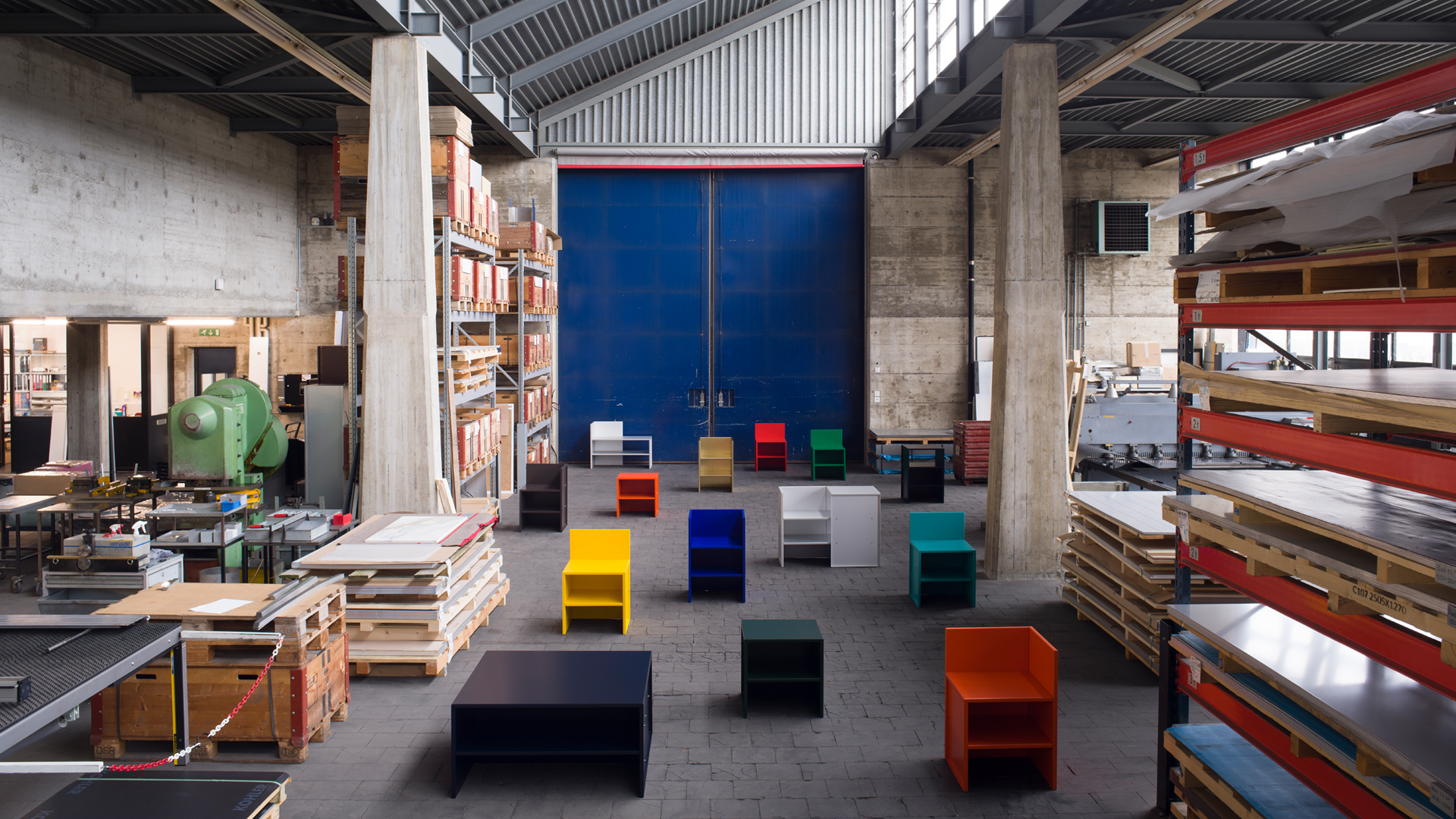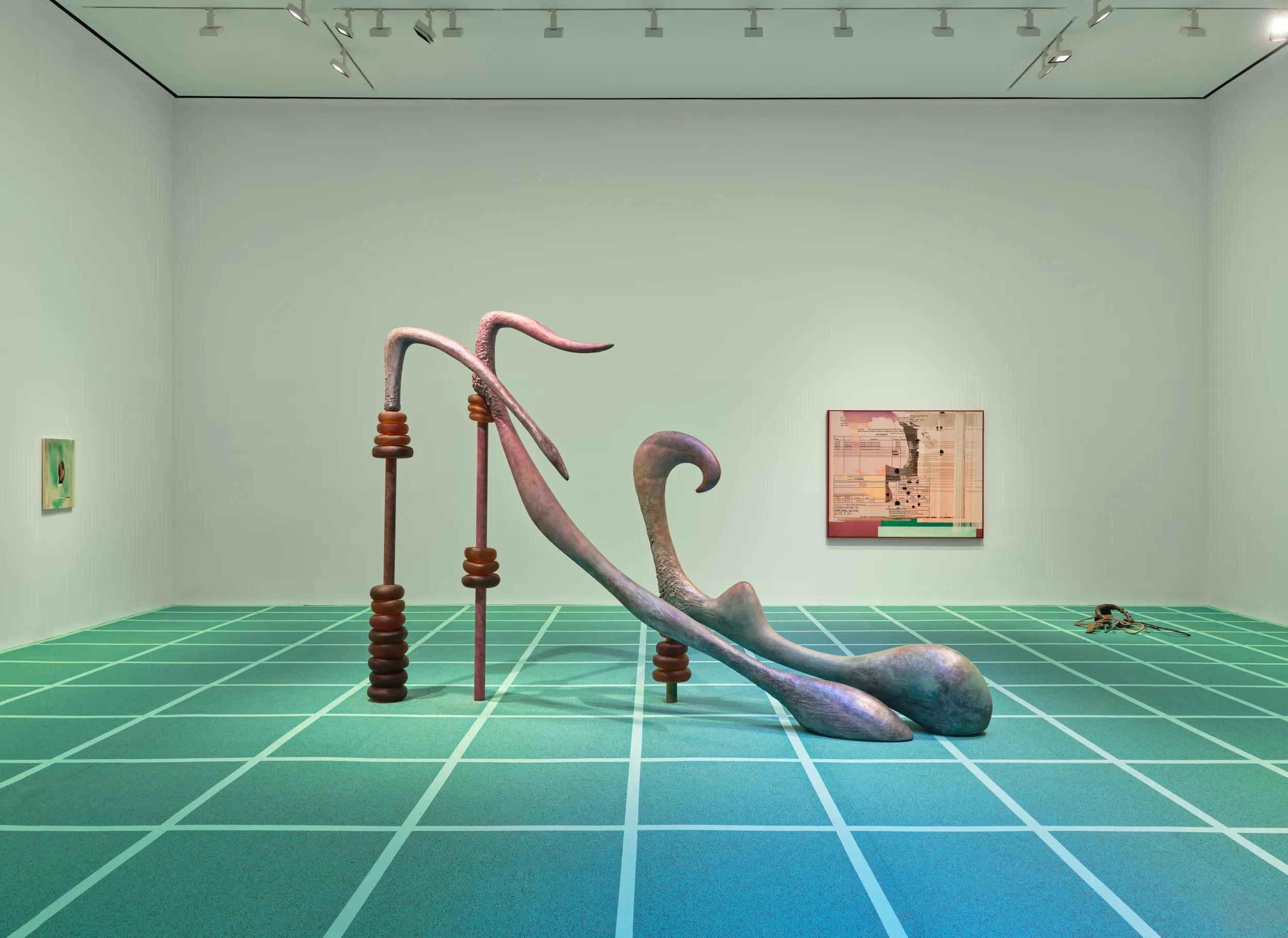
Mike Kelley
Kandors, 1999 – 2011
21 October 2017 - 21 January 2018
Los Angeles
Organized in collaboration with the Mike Kelley Foundation for the Arts, ‘Mike Kelley: Kandors 1999 – 2011’ will be the first comprehensive survey of the Kandors series. These visually opulent, technically ambitious sculptures, along with videos and large-scale installations, rework the imagery and mythology of the popular American comic book superhero Superman in a meditation on loss, power, and memory. Beginning 21 October, the exhibition will present the Kandors works for the first time in the late artist’s home city of Los Angeles, including the installation ‘Kandor-Con 2000’; the sprawling ‘Kandors Full Set’ (2005 – 2009), which features an array of illuminated cities and hand-blown bottles; and the series’ monumental ‘Kandor 10B (Exploded Fortress of Solitude)’, Kelley’s take on Superman’s post-apocalyptic sanctum sanctorum. This extensive survey also includes Kelley’s early Kandor Bottle Drawings, works from the Lenticular series, and complex sculptural installations that include video narratives.
‘Mike Kelley: Kandors 1999 – 2011’ is on view through 21 January 2018.
About Kandors Initiated by Kelley in 1999, the Kandors series comprises numerous representations of Superman’s birthplace, the city of Kandor. The popular Superman story recounts the adventures of an alien being sent to Earth as a baby to escape the total destruction of his home planet, Krypton. However, it turns out that Kandor was not, in fact, destroyed. Shrunk and bottled by the villainous Braniac, the futuristic city was later rescued by Superman and protected under a bell jar in his sanctuary, the Fortress of Solitude. For almost a quarter-century in comic-book time, Kandor and its miniature citizens survived in Superman’s care, sustained by tanks of Kryptonic atmosphere – a constant reminder of his lost past and a metaphor for his psychic disconnection from his adopted planet.
In the late ‘90s, Kelley was invited to be part of a group show in Germany, which focused on the impending millennium by exhibiting contemporary art and historical objects with ‘a special emphasis on the “new media” of the past.’ As the artist wrote, ‘in response to these themes, I decided to create a project that centered on an out-of-date image of the future re-presented through recent technological developments. I chose to focus on the fictional city of Kandor from the Superman comics series.’ Kelley originally conceived ‘Kandor-Con 2000’ to be both an interactive convention space and online forum for Superman aficionados, but due to lack of funding, the public new media portions were never realized.
Examining the extensive archive he amassed of Kandor’s depiction in Superman comics, Kelley was struck by its sometimes flagrant inconsistencies. He chose twenty diverse examples from the myriad two-dimensional renderings of the sci-fi city in order to create three-dimensional Kandors and variant works between 2007 and 2011. In these works, he explores the formal properties of translucency and reflection by casting the Kandors in colored resins, setting them in tinted glass bottles, and illuminating them like reliquaries within specifically designed settings.
An eternally recurrent, but constantly reconfigured, relic of Superman’s childhood, Kandor is an apt symbol of Kelley’s interests in the vagaries of memory. This, relates to his own works that refer to Repressed Memory Syndrome, such as ‘Educational Complex’ (1995), an architectural model made up of replicas of every educational institution that the artist ever attended, with the sections he cannot remember left blank.
About the Exhibition The exhibition at Hauser & Wirth Los Angeles will begin with ‘Kandor-Con 2000’ (1999/2007)’, the first work and touchstone of the Kandors series. This deeply layered installation includes an animation of the city of Kandor; architectural models of Kandor built up over time by onsite model-makers; a group of preparatory pencil Bottle renderings made in 2005; collages of original renderings of the comic book city; and ‘Superman Recites Selections from “The Bell Jar” and Other Works by Sylvia Plath’, a video of an actor as Superman quoting excerpts from Plath’s only novel and various poems. Banners projecting the completion date humorously reflect the impossibility of the endeavor.
On view for the first time in the United States, ‘Kandors Full Set’ (2005 – 2009) comprises twenty large-scale, glass bell jars or bottles and twenty-one cast resin miniature cities – the full sweep of Kelley’s three-dimensional miniature interpretations of the city. This series is presented in total darkness in accordance with Kelley’s focus on the light-scattering properties of the glass vessels.
The exhibition also includes the 2007 works ‘Kandor 1’, ‘Kandor 3’, ‘Kandor 7’, and ‘Kandor 17’. ‘The problem I set out for myself’, Kelley said of the early Kandor sculptures, ‘was to translate the two-dimensional comic-book renderings into three-dimensional sculptures. As I envisioned them, they would be akin to paintings by Henri Matisse in three dimensions, with science-fiction overtones’. Each of these sculptures includes an illuminated miniature version of the Kandor city on a plinth, encased in a glass bell jar coupled with faux gas tanks and hoses, which intend to evoke the life sustaining vapors that Superman used to keep the citizens of Kandor alive. Video projections, depicting the bottles with swirling atmospheric and light effects inside them, feature an otherworldly soundtrack composed by Kelley. Lenticulcar lightboxes manipulate the two-dimensional designs and colors of the comic book illustrations. Of these, Kelley wrote, ‘My goal was to highlight the differences between the graphic qualities of the comic-book illustrations and the dimensionalized versions of them represented in the sculptures’.
Works in North Gallery evidence a formal shift in Kelley’s series, as the artist moves beyond the polished, finish-fetish surfaces of earlier works to employ organic, rock-like forms and textures, conglomerations of lumps of discarded resin, and found objects from the studio to portray the shrunken city and its environs.
As early as 2009, Kelley began to conflate his two major ongoing projects – The Extracurricular Activity Projective Reconstruction series, thirty-one iterations of which were seen in his groundbreaking ‘Day is Done’ exhibition of 2005 and the Kandors series. The Extracurricular Activity Projective Reconstruction series used photographs from high school yearbooks that Kelley saw as ‘folk rituals and entertainments’ to create live-action narratives that staged his investigation of repressed trauma. The video installation ‘Extracurricular Activity Projective Reconstruction #35 (Dour Gnomes)’ (2010) links to the Kandors series through a narrative that transports the viewer inside the city of Kandor.
The climax and coda to the Kandors series, ‘Kandor 10B (Exploded Fortress of Solitude)’ (2011), is a cavernous installation spread across the East Gallery. Exhibited for the first time in Los Angeles, this epic work is presented together with the EAPR #36 video ‘Vice Anglais’ – an unsettling, but humorous, satire that collides psychosexual and sadomasochistic drama with a repertoire of parodic clichés derived from British Hammer Horror films.
The blackened exterior of Kelley’s monumental fortress, ‘Kandor 10B (Exploded Fortress of Solitude)’, contains a dimly lit cave-like environment surrounded by fragmented boulders, a gas tank, hoses, a buck, and chains, which evokes a haunting sense of unease and menace. Here, the artist shifted his formal investigations from color, light, and transparency to ambitious sculptural gestures inflected by darkness and opacity. ‘Exploded Fortress of Solitude’ is a ruin of textured, black-hued, faux boulders and slabs that draws viewers inside by the sheer force of its scale and mystery, while the murmuring acoustics of ‘Vice Anglais’ layer the atmosphere with tension and anticipation. In the video, the ‘Exploded Fortress of Solitude’ serves as the backdrop for the exploits of Kelley’s gang of perverts; visitors exploring the cave are likewise subjected to the unsettling whimpers and debauchery of the ‘English Vice.’
One of the final works of the Kandors series, ‘Exploded Fortress of Solitude’, suggests a dramatic denouement for the fated city, a possible catharsis not only for Superman, but also for Mike Kelley, and for us. It emblematizes the extraordinary articulation between his two great serial enterprises of the 21st century that preoccupied Kelley in the years before his untimely death: Kandors and the Extracurricular Activity Projective Reconstructions (of which ‘Vice Anglais’ was the 36th and final installment, along with its pair, ‘EAPR #36B [Made in England]’, in which the dialogue of #36 is spoken by a variety of mostly ceramic objects ‘made in England’). From within the depths of Superman’s fortress, the visitor is reunited with the city of Kandor, now rendered as a glowing rose-colored emanation encased beneath a bell jar. Eerily illuminating the darkness of the rocky chamber, the roseate Kandor reveals that the crevices of Superman’s solitary sanctuary actually glitter with tiny gold trinkets. The Fortress of Solitude has indeed exploded. Chaos has triumphed over order and long years of preservation have succumbed to galactic cataclysm – but we are left with a pot of gold. At the limit of loneliness and trauma, in an uncanny archaic place, we encounter a glittering symbol of duality – of hope and life, of wealth and greed.
Selected images

Kandor-Con 2000
1999

Lenticular 1
2007

Lenticular 3
2007

Lenticular 7
2007

Kandor 3
2007

Kandor 7
2007
Installation views


Related Content
About the Artist

Mike Kelley
Mike Kelley is widely considered one of the most influential artists of our time. Originally from a suburb outside of Detroit, Kelley attended the University of Michigan, Ann Arbor, before moving to Southern California in 1976 to study at California Institute of the Arts from which he received an MFA in 1978. The city of Los Angeles became his adopted home and the site of his prolific art practice. In much of his work, Kelley drew from a wide spectrum of high and low culture, and was known to scour flea markets for America’s cast-offs and leftovers. Mining the banal objects of everyday life, Kelley elevated these materials to question and dismantle Western conceptions of contemporary art and culture.
Starting out in the late 1970s, Kelley became known for performance and installation based works; he came to prominence in the 1980s with a series of sculptures composed of common craft materials and stuffed animals. His work later widened in scope and physical scale, exemplified by ‘Educational Complex’ (1995), the ‘Kandors’ series (1999 – 2011), ‘Extracurricular Activity Projective Reconstruction’ series (2000 – 2011), and the posthumously completed public work ‘Mobile Homestead’ (2006 – 2013). These projects invoked a vast range of media and forms, illustrating the artist's versatility and underscored a number of Kelley's recurrent themes, such as repressed memory, sexuality, adolescence, class, and Americana, which were central to his artistic praxis. Throughout his career, Kelley also worked on curatorial projects, collaborated with many artists and musicians, and produced a formidable body of critical and creative writing.
Current Exhibitions
1 / 12












